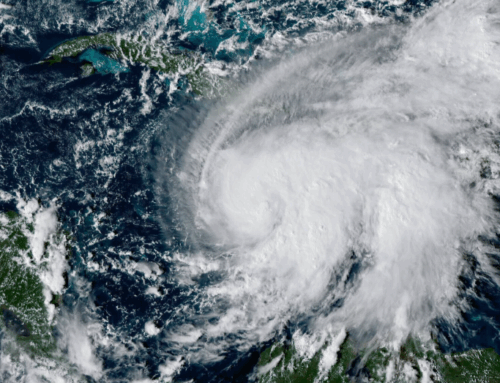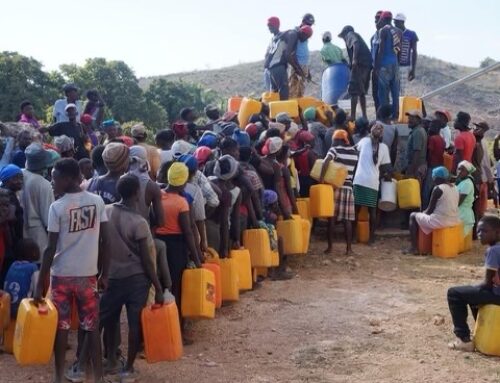Breaking News: Emergency Prayer Request
Port au Prince – Please pray for the people of Haiti. Hurricane Emily is on her way. The projected path is looking like it will go directly over Port au Prince. The last storm killed 23 people the week of June 8, 2011 and it was not as large as this storm. The rain and wind peak is expected to occur from 8pm PST tonight to 4pm PST on Thursday, dumping 20 inches of rain and winds of 45 mph. Flooding and mudslides are the biggest danger.
Quote from the Associated Press/Fox News Article:
In Haiti’s capital of Port-au-Prince, Jislaine Jean-Julien, a 37-year-old street merchant displaced by the January 2010 earthquake, said she was praying the storm would pass her flimsy tent without knocking it over. “For now, God is the only savior for me,” Jean-Julien said at the edge of a crowded encampment facing the quake-destroyed National Palace. “I would go some place else if I could but I have no place else to go.”
Pray that this will bring more people into the Kingdom of heaven. Please pray for the poor people living in tents that will most likely be blown and washed away.
PORT-AU-PRINCE, Haiti
Associated Press
8/3/11
FoxNews.com
Tropical Storm Emily brushed past Puerto Rico and headed Wednesday toward the Dominican Republic and Haiti, where more than 630,000 people are still without shelter after last year’s earthquake.
A “steady shield of rain” should reach the island of Hispaniola shared by the Dominican Republic and Haiti around noon Wednesday and the rainfall should worsen by late afternoon, said John Dlugoenski, senior meteorologist with Accuweather.com.
“The biggest threat to lives is probably the flooding,” Dlugoenski said.
But it appears the worst of the storm will largely spare Haitian capital, where most of the quake victims are sheltered.
Michel Davison of the U.S. National Oceanic and Atmospheric Administration said parts of the Dominican Republic could see up to 20 inches of rain over the next 36 hours.
Up to 10 inches is expected in rural Haiti and up to 6 inches in the capital.
Civil defense officials and the military in the Dominican Republic have already begun moving people out of high-risk zones ahead of the storm. Haitian authorities urged people to conserve food and safeguard their belongings.
In Haiti’s capital of Port-au-Prince, Jislaine Jean-Julien, a 37-year-old street merchant displaced by the January 2010 earthquake, said she was praying the storm would pass her flimsy tent without knocking it over.
“For now, God is the only savior for me,” Jean-Julien said at the edge of a crowded encampment facing the quake-destroyed National Palace. “I would go some place else if I could but I have no place else to go.”
Haitian emergency authorities set aside a fleet of 22 large white buses in the event they needed to evacuate people from flooded areas. Emergency workers would then bus the people to dozens of schools, churches and other buildings that will serve as shelters.
“We’re working day and night to be able to respond quickly in case we have any disasters,” said Marie Alta Jean-Baptiste, director of Haiti’s Civil Protection Agency.
Emergency workers, both Haitian and foreign, also sent out text messages to cell phone users, alerting them to the approaching storm and to take precautions such as staying with friends or relatives if that were an option.
Such advisories are not uncommon but few in Haiti have the means to heed them because of the crushing poverty.
“This is not the first time we’ve heard these messages,” said Alexis Boucher, a 29-year-old man who lives in Place Boyer, a public square that became a camp after the earthquake. “We receive these messages and yet we still don’t have anywhere to go.”
A slow-moving storm that triggered mudslides and floods in Haiti killed at least 28 people in June.
The United Nations peacekeeping force in Haiti notified its 11,500 troops to be on standby in case they need to respond, said Sylvie Van Den Wildenberg, a spokeswoman for the U.N. peacekeeping mission. The International Federation of Red Cross and Red Crescent Societies also, put emergency teams on standby, which have access to relief supplies already in place for up to 125,000 people in seaside towns throughout the country.
In the Dominican Republic’s southern tourist districts, workers at hotels and restaurants gathered up umbrellas, tables, chairs, and anything else that might be blown away.
Capt. Frank Castillo, dock master of the Marina Casa de Campo in the southeastern tourist city of La Romana, and his crew helped boat owners secure their vessels in slips or pull them ashore.
In Puerto Rico, there were no reports of major damage or injuries and no immediate demand for the nearly 400 schools that were converted into emergency shelters around the island.
Gov. Luis Fortuno had declared a state of emergency and most government offices were closed. Ahead of the storm, people cleared water and other emergency supplies from store shelves and tourists fled the small Puerto Rican islands of Culebra and Vieques.
But most of the island saw no more than sporadic gusts and showers.
The U.S. National Hurricane Center said the storm was heading west at 14 mph late Wednesday morning, and it was expected to veer later toward the northwest. The storm was about 125 miles south-southeast of Santo Domingo, capital of the Dominican Republic. It had maximum sustained winds of 50 mph.
A tropical storm warning was in effect for Puerto Rico, Vieques, Culebra, the Dominican Republic, Haiti, the southeast Bahamas, eastern parts of Cuba and the Turks and Caicos Islands.





